Exploring 3D Printing with Stainless Steel
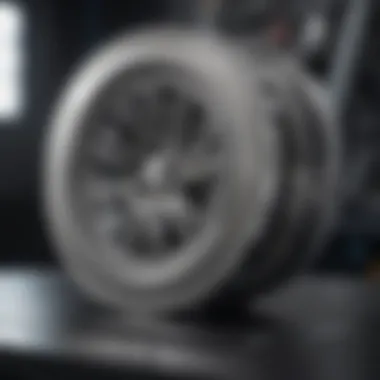
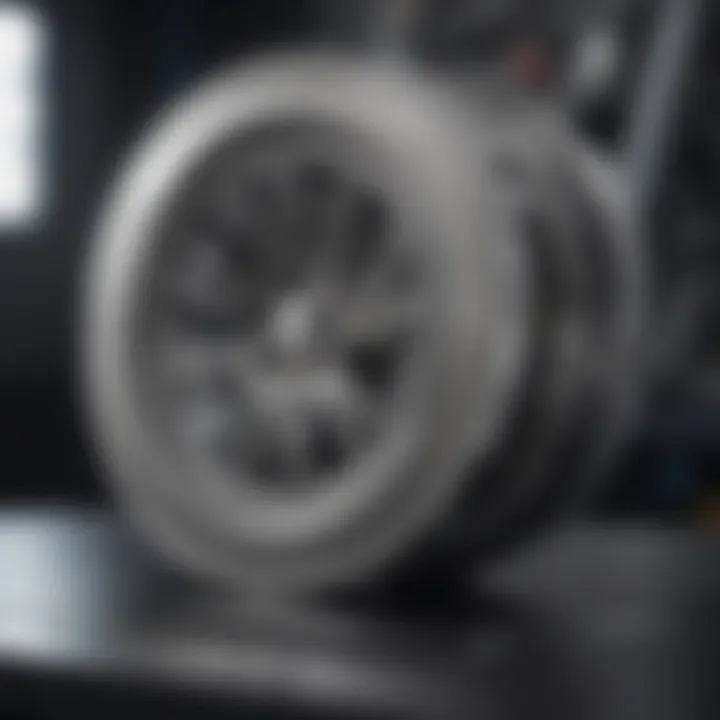
Intro
The world of manufacturing has witnessed a seismic shift with the advent of 3D printing technology. Among the various materials available for this type of additive manufacturing, stainless steel stands out, not just for its strength but also for its versatility. As industries increasingly look to innovate and optimize production processes, understanding the intricacies of 3D printing with stainless steel becomes crucial.
In this exploration, we will examine the methods of printing stainless steel, dive into advantages and drawbacks, and take a closer look at real-world applications. Whether you’re a researcher, student, or industry professional, the insights provided here will illuminate the significance of this technology in today’s landscape.
Research Context
Background Information
Stainless steel, known for its corrosion resistance and structural integrity, has long been a staple in various sectors including aerospace, medical, and automotive. Historically, methods like machining and casting were the go-to strategies for shaping this material; however, 3D printing introduces a new paradigm. With layer-by-layer fabrication, complex geometries that were once hard to achieve can now be realized, expanding design possibilities dramatically.
Importance of the Study
As we venture deeper into this study, the importance of integrating stainless steel with 3D printing techniques becomes clear. This is not just about material properties; it’s about the ability to reduce waste, streamline production, and foster innovation within industries. For students and professionals alike, knowledge in this area opens doors to new practices and methodologies that could revolutionize traditional manufacturing.
Discussion
Interpretation of Results
Through various studies and industry reports, evidence points towards increased efficiency and reduced lead times when using 3D printing with stainless steel. The ability to create intricate lattice structures allows for weight reduction without compromising strength. This brings significant advantages in high-stakes areas like aerospace, where every gram counts.
Comparison with Previous Research
When we consider previous endeavors in additive manufacturing, many were limited by material constraints. Earlier efforts often produced items that lacked the strength or precision desired. In contrast, modern advancements in technology and material science are breaking these barriers. For instance, experiments with compositions such as stainless steel 316L have shown remarkable improvements when processed through selective laser melting compared to older methodologies.
As we unfold more details in the following sections, it is essential to stay attuned to how these findings play a role in shaping future production techniques.
Understanding Stainless Steel
Grasping the intricacies of stainless steel is pivotal in comprehending its applications in 3D printing. This material is not merely a rust-resistant metal; it embodies a blend of characteristics that enhance functionality and longevity in products. Understanding stainless steel includes an exploration of its composition, properties, and different types that cater to diverse needs in additive manufacturing.
Composition of Stainless Steel
Key Elements
The composition of stainless steel chiefly revolves around iron, which is the base element. However, it’s the presence of chromium, typically around 10.5% or more, that grants stainless steel its characteristic ability to resist corrosion. When exposed to oxygen, chromium forms a passive layer of chromium oxide on the surface, protecting the underlying metal from rusting. This specific aspect makes it an exceptionally favorable choice for a spectrum of industries.
One unique feature of chromium is its contribution to strength without substantial weight, making the overall structure both durable and lightweight. This property is advantageous in 3D printing, where material optimization is crucial. Furthermore, the robustness imparted by this element facilitates complex geometries during the additive manufacturing processes.
Types of Stainless Steel Alloys
Stainless steel isn’t a one-size-fits-all material; it comes in various alloys tailored for particular applications. The primary types are austenitic, ferritic, and martensitic stainless steels. Each type possesses distinct properties that dictate its usage in 3D printing.
For instance, austenitic stainless steels, such as 304 and 316, are renowned for their excellent weldability and toughness. This characteristic is notably beneficial in 3D printing applications where components require joining or high-stress resistance. On the contrary, martensitic steels like 410 exude higher hardness, yet may be more challenging to work with, increasing the risk of defects during the printing phase.
In contemplating these alloys, it becomes evident that their specific traits can significantly influence the print results and the functionality of the final product.
Properties of Stainless Steel
Corrosion Resistance
Amongst the myriad of properties that stainless steel boasts, its corrosion resistance stands tall. This quality isn’t just an incidental benefit; it plays a significant role in determining the lifespan and performance of printed components. Whether employed in medical devices or automotive parts, the ability to withstand corrosive environments can be a game changer.
The key characteristic here lies in the formation of that protective oxide layer. It’s essentially a defense mechanism that ensures longevity even in harsh conditions. However, when examining applications, one must also consider that not all types of stainless steel offer the same level of corrosion resistance. For instance, 316 stainless steel, infused with molybdenum, presents superior performance in chloride environments compared to 304.
Strength and Durability
The strength and durability of stainless steel cannot be overstated, especially in the context of 3D printing. This quality contributes not only to the structural integrity of the parts but also to how they hold up under stress and fatigue. This means that components can endure more significant loads and shocks, which is crucial for applications in demanding environments such as aerospace or automotive.
Moreover, the unique feature of stainless steel is its ability to sustain performance across a myriad of temperatures without compromising its characteristics. This versatility allows for a broader scope of application, reinforcing its status as a desirable material for 3D printing.
Overall, understanding stainless steel is not merely an academic exercise but a fundamental framework that informs decisions in the design and manufacturing processes, ensuring optimal results in 3D printing.
Prelims to 3D Printing Technology
Understanding 3D printing technology lays the groundwork for appreciating its role in modern manufacturing, especially with materials like stainless steel. The significance of this topic cannot be overstated. It highlights not just the transformative nature of addditive manufacturing, but also the nuanced ways this technology is reshaping industries. Particularly in contexts where precision and durability are paramount, grasping these principles provides insights into how we can leverage 3D printing to meet complex design requirements.
Basic Principles of 3D Printing
3D printing, at its core, involves creating three-dimensional objects by adding material layer by layer. It diverges significantly from traditional subtractive methods, where material is cut away from a solid block. Understanding these basic principles helps clarify why companies opt for this innovative approach, especially when working with metals like stainless steel.
Differentiating Additive Manufacturing Techniques
When it comes to differentiating additive manufacturing techniques, the options are plentiful. Each technique has its unique strengths that cater to different specific needs in the manufacturing process. For instance, techniques such as Selective Laser Melting and Binder Jetting stand out because they allow for greater precision in producing complex shapes.
The key characteristic of these techniques is their flexibility in design. This flexibility makes them a popular choice for creating bespoke components in industries ranging from aerospace to medical devices. A unique feature worth noting is their ability to handle complex geometries that traditional methods often struggle with. However, these techniques can also come with disadvantages such as the need for intricate support structures or the production speed that might not meet high-volume demands.
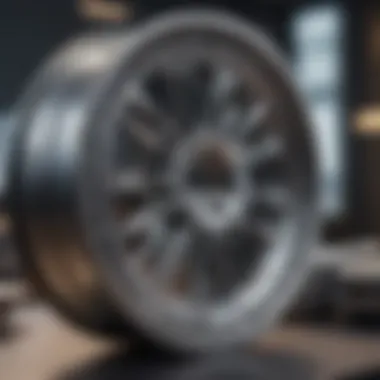
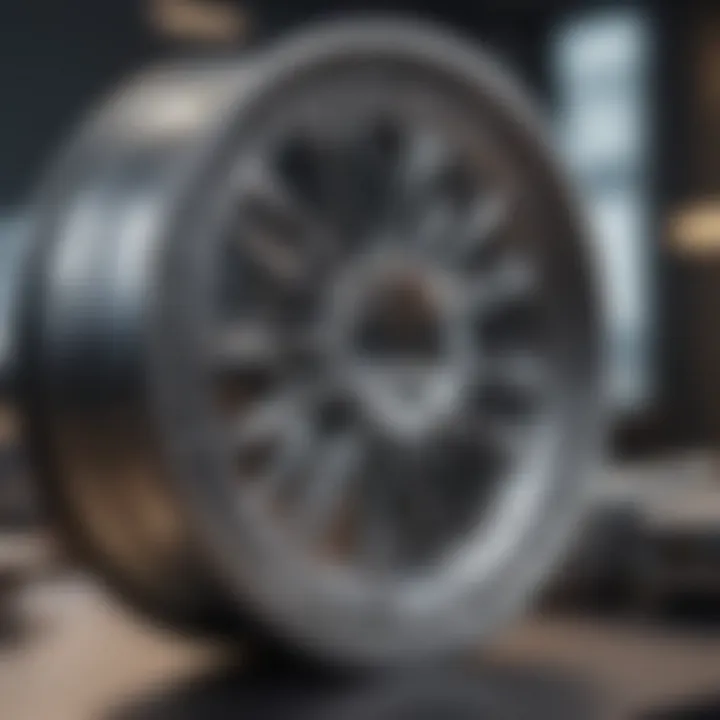
Layer-by-Layer Construction
Layer-by-layer construction is the essence of how 3D printing operates, and it has profound implications for manufacturing efficiency. This method not only allows for detailed designs but also fosters innovation. Each layer solidifies before the next is added, enabling corrective action if issues arise at any stage of production.
One key advantage of this approach is its ability to reduce material waste significantly compared to traditional methods. In layer-by-layer construction, materials are utilized precisely where needed. However, this method may create longer overall production times, especially for intricate designs, which can be a drawback for time-sensitive projects.
Materials in 3D Printing
The variety of materials available for 3D printing is a focal point of the technology. With a range from plastics to metals, the capacity to choose the right material is essential for a successful printing process. This versatility is particularly important for stainless steel due to its favorable properties, such as corrosion resistance and strength.
Variety of Materials Available
When discussing the variety of materials available in 3D printing, it is clear that the technological landscape has expanded dramatically. From polymer-based to metal powders, each material has specific applications and advantages. For instance, plastics are often used for rapid prototyping while metals like stainless steel are preferred for applications demanding strength and durability.
A unique feature of this variety is how it enables customization. This flexibility allows design engineers to select material based on desired mechanical properties and aesthetics, making it a crucial aspect of modern manufacturing. However, it is also important to consider the disadvantages, such as limited material properties that some polymers possess when compared to metals.
Metal vs. Non-Metal Printing
In the realm of 3D printing, metal versus non-metal printing stands as a significant consideration. Metal printing, especially with stainless steel, tends to offer superior strength and reliability, which is crucial in high-stakes industries like aerospace and medical. Non-metal printing, often seen with plastics, is more commonly employed for safety-related components whose strength is less critical.
The key characteristic of metal printing is its durability, which is why it is becoming increasingly popular in applications that require parts to withstand harsh environments. A unique aspect is its growing accessibility thanks to advancements in printing technology, which makes it more viable for varied applications. However, the cost associated with metal printing can be prohibitive, necessitating a careful cost-benefit analysis users must undertake when opting for this material.
The Process of 3D Printing Stainless Steel
Understanding the intricacies of the process of 3D printing stainless steel is vital for grasping how this innovative technology can revolutionize manufacturing. This section delves into the core technologies involved, the steps typically undertaken, and the significance of this process to various industries. By comprehending the processes, one can appreciate the benefits brought forth, along with the challenges that may arise.
Technologies Used
In the world of 3D printing, different technologies cater to specific needs, with Selective Laser Melting (SLM) and Electron Beam Melting (EBM) leading the charge for stainless steel applications.
Selective Laser Melting (SLM)
Selective Laser Melting (SLM) stands out due to its capability of producing complex geometries that traditional manufacturing might struggle with. The key characteristic of SLM lies in its use of a high-power laser that melts fine metal powder layer by layer. This process allows for precise control, resulting in finely detailed parts with excellent mechanical properties.
One unique feature of SLM is its versatility; it can process a wide variety of metals, making it a solid choice for companies requiring adaptability. Additionally, it offers the potential for optimizing designs by reducing material usage without sacrificing strength. However, it also comes with its drawbacks, like the need for post-processing to ensure surface finish, which can take time and increase costs.
Electron Beam Melting (EBM)
EBM presents an alternative with its use of an electron beam, allowing for faster melting rates compared to SLM. Its primary characteristic is its ability to work in a vacuum, which minimizes oxidation during the printing process. This makes it particularly valuable for stainless steel, where oxidation can compromise quality.
A unique aspect of EBM is the higher build speeds, which can lead to lower production times for larger components. This technology works well for parts requiring high density and strength. However, the ejected heat during melting can lead to thermal stresses in printed parts, which can affect their mechanical integrity and must be managed during printing.
Steps in 3D Printing Stainless Steel
The journey of 3D printing stainless steel is not just about the technology; it also involves several critical steps that summarize the entire workflow.
Designing the CAD Model
The first step in the actual process is Designing the CAD Model. This phase involves creating a digital representation of the part to be manufactured. Accurate design is crucial, as it dictates how well the final product will meet specifications. A key characteristic here is the need for a design that caters to the capabilities of 3D printing rather than traditional manufacturing. Flexible designs that utilize the unique advantages of additive manufacturing, like complex internal structures, can be advantageous.
One unique feature of CAD modeling for 3D printing is the incorporation of design for manufacturability (DFM) principles, which considers how the part will be printed. Benefits include optimized material use and improved print reliability. However, poor initial design choices can lead to significant issues down the line, such as print failures or compromised part performance.
Printing and Post-Processing
Once the CAD model is set, the next stage is Printing and Post-Processing. This step relies heavily on the chosen technology—be it SLM or EBM. The printing itself can take considerable time, depending on the complexity of the part and the chosen technology. One critical aspect is monitoring and tweaking process parameters for optimal quality.
Post-processing is equally important. After printing, parts usually require methods like heat treatment, machining, or surface finishing to achieve the desired properties. A notable benefit of effective post-processing is the enhancement of surface quality and mechanical characteristics. Yet, it can be time-consuming and add extra costs to the project.
In summary, the process of 3D printing stainless steel encompasses sophisticated technology and meticulous steps, from designing the model to processing the finished part. Each element plays a pivotal role in determining the final outcome.
Advantages of 3D Printing with Stainless Steel
The advantages of 3D printing with stainless steel are substantial, marking significant shifts in manufacturing processes and innovations across fields. Given its superior qualities, stainless steel brings forth a unique set of benefits when utilized in additive manufacturing. It presents not only opportunities for efficiency but also the means for intricate applications that traditional forms of manufacturing may find difficult to achieve.
Customization and Complexity
Tailored Designs
Tailored designs allow organizations to meet specific needs through personalized solutions. This cutting-edge aspect serves as a powerful element of stainless steel 3D printing. For example, in sectors such as aerospace or medical, having tailored components means engineers can create parts that fit particular specifications, essentially eliminating the trial-and-error method often seen in traditional fabrication processes.
This customization isn't merely about adapting existing models; it also enables the creation of components that are impossible to manufacture by conventional methods. One key characteristic is the precision involved; engineers can adjust and refine designs without incurring significant additional costs. The ability to mold ideas into reality through tailored designs is what makes them a standout feature in modern manufacturing. However, one must also consider the potential downsides, such as extended timelines that can arise during the design phase and increased complexity.
Intricate Geometries
Intricate geometries represent another facet of why 3D printing with stainless steel can be a game-changer. Unlike traditional machining, which often limits complexity due to tooling capabilities, 3D printing opens avenues for shapes and structures that were once unattainable. This aspect is particularly beneficial in creating lightweight structures that do not compromise strength. Take, for instance, lattice structures utilized in automotive applications, where weight reduction is crucial without sacrificing structural integrity.
The unique feature of intricate geometries lies in their ability to optimize material usage while enhancing performance. One might even say they embody the marriage of form and function. While these complex shapes facilitate unique designs and applications, they may also lead to challenges in post-processing and finishing, requiring meticulous consideration by engineers and manufacturers.

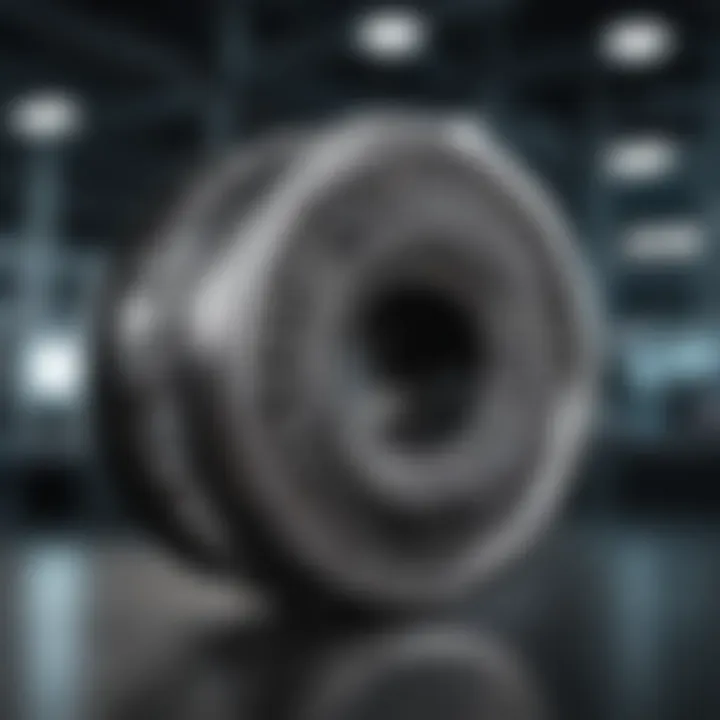
Cost Efficiency and Waste Reduction
Reduction of Material Waste
Reduction of material waste is a cornerstone advantage of stainless steel 3D printing. This process generates parts layer by layer, inherently cutting down on the surplus material that traditional subtractive methods produce. For instance, in conventional manufacturing, cutting away excess material often leads to significant waste, whereas additive manufacturing uses only what is needed for the final product.
The key characteristic here is efficiency. Conscious of prevalent environmental concerns, many industries are shifting focus to methods that are more sustainable. Reduced waste means less impact on the environment, making 3D printing an appealing option for companies looking to bolster their green credentials. Of course, there can be initial costs to consider, especially when transitioning from traditional methods to additive manufacturing; nevertheless, the long-term benefits are hard to ignore.
Lowered Manufacturing Costs
Lowered manufacturing costs are equally significant. 3D printing with stainless steel can provide substantial financial savings both in raw materials and labor. The process can decrease the hours needed in production, all while maintaining high-quality output. Additionally, the flexibility of on-demand production contributes to eliminating excess inventory and storage costs.
Consider a scenario where rapid prototyping could let engineers iterate on designs without the hefty fees usually attached to alterations. This unique feature helps companies save both time and money, particularly in industries where speed to market is paramount. While it should be noted that initial setup costs for equipment can steeply rise, many find the return on investment compelling due to the continuous savings made in the long run.
"With every layer printed, 3D printing not only shapes the object but also transforms the paradigm of production."
Challenges in 3D Printing Stainless Steel
The process of 3D printing with stainless steel is not without its hurdles. Understanding the challenges is crucial for anyone delving into this innovative manufacturing method. These challenges can shape the outcomes of projects, influencing everything from the production workflow to the final product quality. Two primary challenges stand out: technical limitations and economic considerations. Each has its implications that can significantly affect the usability of stainless steel in 3D printing applications.
Technical Limitations
Surface Finish Quality
When it comes to surface finish, it’s like the icing on the cake — it can make or break the aesthetic and functional attributes of a printed part. The surface finish of 3D printed stainless steel can be rough and uneven, unlike traditionally manufactured counterparts. This roughness, which arises from the layer-by-layer nature of 3D printing, leads to what some folks may call a ‘not-so-pleasing look’. To put it simply, surface finish quality affects both the mechanical properties and the aesthetic appeal of the finished product.
Furthermore, a smoother surface can enhance the fatigue resistance of components, which is especially important in parts required in high-stress environments like aviation or automotive applications. However, achieving this desirable smoothness often requires costly post-processing techniques, like polishing or coating, which can reduce the overall cost-effectiveness of the process.
Dimensional Accuracy
Dimensional accuracy is another critical aspect to consider when discussing 3D printing with stainless steel. The reality is that when precision matters, every millimeter counts. During printing, factors like thermal expansion and contraction can lead to parts being slightly off-spec. This can be frustrating, especially for those tasked with ensuring that components fit together seamlessly in practical applications.
Think about it — if a part meant to fit precisely in an assembly is even a smidgen out of line, it can derail an entire project. This reality renders attention to dimensional accuracy a priority in any design phase. With this in mind, parts printed in stainless steel often undergo rigorous inspections or additional adjustments to ensure they meet strict tolerances.
Economic Considerations
Equipment Costs
Turning to the financial aspect, let’s talk about equipment costs. Investing in high-quality 3D printing equipment can feel like a steep mountain to climb. The machinery suited for 3D printing with stainless steel, such as selective laser melting or electron beam melting systems, carries hefty price tags. These initial investments can be a significant barrier for startups or those looking to dabble in this technology without a large bankroll.
Moreover, it’s not just the upfront costs that get one’s head spinning; maintenance and operational costs can add up quickly. Therefore, businesses need to evaluate their financial readiness before diving in, weighing the potential returns against the initial financial outlay.
Long-Term Viability
The long-term viability of 3D printed stainless steel components also deserves scrutiny. As industries evolve and manufacturing techniques continue to advance, the sustainability of using 3D printed parts can come into question. Not only do businesses need to assess whether these parts will stand the test of time in terms of performance, but also if the technology surrounding their production will remain relevant.
Considering this, manufacturers must be prepared to adapt to changes in technology and market demands to stay competitive. This adaptability could involve consistently investing in newer printing technologies or modifying current processes in response to industry shifts, which can also impact overall profitability.
"In the realm of manufacturing, it’s not just about making things; it’s about making things that last."
Applications of 3D Printed Stainless Steel
3D printing has opened a whole new realm of possibilities for various industries. When it comes to stainless steel, the benefits are substantial. The strengths of 3D printing inherently complement the unique properties of stainless steel. This combination allows industries to push the envelop even further, making it easier to create complex parts without the constraints found in traditional manufacturing.
- Durability and Strength: Stainless steel is renowned for its corrosion resistance and strength. In 3D printing, these properties translate to components that can stand the test of time and perform under pressure.
- Versatile Applications: From aerospace to automotive, the use cases for 3D printed stainless steel are vast. Customization plays a significant role, enabling components tailored precisely to specific needs.
The following sections delve deeper into the specific applications, notably in the aerospace, medical, and automotive sectors, highlighting how diverse and critical this innovation is.
Aerospace Industry
The aerospace domain has been one of the early adopters of 3D printing technology. With stringent regulations and the necessity for lightweight yet durable materials, stainless steel fits the bill perfectly.
Components for Aircraft
When it comes to components for aircraft, the requirements are strict. Parts need to withstand extreme conditions while maintaining structural integrity. Thin-walled structures produced via 3D printing can achieve this.
The lightweight nature of 3D printed stainless steel also significantly reduces fuel consumption, which is not just beneficial for a company's bottom line but also for environmental concerns. Additionally, the design flexibility allows engineers to create complex geometries that are often not possible with traditional methods.
However, one ought to consider that the finish quality and dimensional accuracy can be a challenge. It's critical that tolerances are well-maintained to ensure that all components fit seamlessly.
Prototyping and Tooling
In the world of aerospace, prototyping can often be a lengthy process. With 3D printing, designs can be quickly turned into physical prototypes, allowing for faster testing and iteration. The key characteristic of rapid prototyping here is turning ideas into recognizable forms almost overnight.
Moreover, tooling requirements also benefit—no need for large-scale production runs to validate designs. But there’s a trade-off. These prototypes may not be as durable as their production counterparts, often requiring more iterations during the process.
Medical Sector
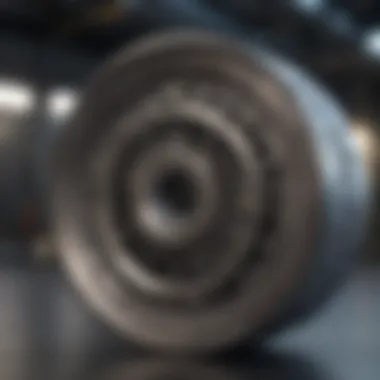
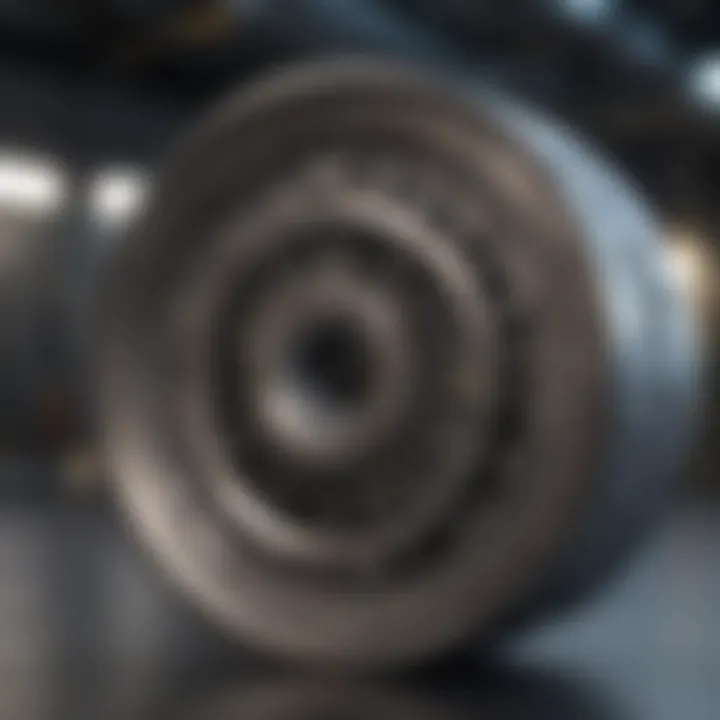
The healthcare industry has also embraced 3D printing, and stainless steel is carving out its niche here as well. Customization can lead to advancements that make surgeries safer and more effective.
Customized Implants
Customized implants can incredibly enhance patient outcomes. Stainless steel’s ability to be precisely tailored means that each implant can be designed to fit a patient’s unique anatomy, improving comfort and effectiveness.
This adaptability is often a game-changer in surgical situations. However, high manufacturing costs can be a barrier, making it crucial to establish a balance between customization and overall expense.
Surgical Instruments
Equipping hospitals with the right tools is key for efficient operations. 3D printing allows for the creation of surgical instruments tailored to the medical staff’s requirements. This adaptability can streamline procedures, saving precious time in critical situations.
Yet, reliability must not suffer for the sake of customization. Over time, some 3D printed tools might require more maintenance compared to traditionally manufactured ones, adding another layer to consider in their deployment.
Automotive Industry
Innovation in the automotive sector has always been about lighter, faster, and more efficient vehicles. Stainless steel 3D printing plays a crucial role in achieving these targets.
Lightweight Parts Manufacturing
Weight reduction in vehicles leads to improved fuel efficiency. The ability to create lightweight yet strong parts is critical as manufacturers aim for more environmentally friendly vehicles. 3D printing with stainless steel remarkably reduces the weight of components without compromising strength.
However, while the benefits are clear, the production speed can be slower than traditional methods. This poses challenges when meeting high-volume demands.
Rapid Prototyping
In the fast-paced automotive industry, rapid prototyping becomes an invaluable tool. Companies can quickly visualize concepts and initiate design modifications on the fly, leading to faster time to market.
The unique feature of short product development cycles is appealing in today’s competitive landscape. On the downside, prototypes may differ in performance characteristics, leading to recognition that extensive testing is still necessary before mass production.
In closing, the applications of 3D printed stainless steel represent a significant leap in manufacturing capabilities across diverse fields. The numerous advantages often outweigh the challenges, making it a crucial arena for innovation in the coming years.
Future of Stainless Steel 3D Printing
The landscape of manufacturing is undergoing a seismic shift thanks to 3D printing, particularly when it comes to stainless steel. This future is not just about technological fluff or hot air; it’s paving the way for more efficient, innovative, and versatile manufacturing. Understanding the trajectory of this technology is crucial for professionals across various sectors. The promise lies in enhanced performance characteristics and reduced waste.
Besides its significance in material sciences, the future of stainless steel 3D printing stands tall due to its potential to drive customization, streamline production processes, and support sustainable practices. Companies that harness this technology are not just keeping up with trends; they are often setting them.
Technological Advancements
Improved Printing Techniques
Improved printing techniques, such as more precise laser systems and faster layer deposition rates, play a pivotal role in advancing stainless steel 3D printing. One standout method is direct energy deposition, which allows for the layering of material with a focus on heat management.
The key characteristic of these advanced printing methods is their ability to produce high-density parts without compromising on strength or integrity. This makes them an advantageous choice for applications demanding not just aesthetics but robust functionality. The unique feature of improved printing techniques lies in their adaptability; they can cater to intricate designs while maintaining tight tolerances.
However, these advancements come with their own set of challenges. While improving the finish quality and repeatability of printed parts, they also require sophisticated equipment, which may not be feasible for smaller businesses.
Materials Innovation
Materials innovation is another cornerstone in the future of 3D printing with stainless steel. New alloy compositions and composite materials are emerging, making it possible to enhance properties such as corrosion resistance or reducing weight without compromising strength. A notable development is the introduction of hybrid materials that integrate polymers with stainless steel.
The critical aspect of materials innovation is its availability for custom formulations tailored to specific applications. This flexibility is a boon for industries looking for specialized solutions. However, the intricacies of processing these new materials can complicate the production cycle and might necessitate additional training for operators.
Market Trends
Growing Demand Across Industries
The growing demand across industries for stainless steel 3D printing stems from its capacity to deliver tailored solutions rapidly. Sectors like aerospace, automotive, and medical are increasingly looking to exploit this technology for custom components that meet stringent performance standards.
A noteworthy characteristic of this trend is the increasing collaboration between manufacturers and end-users. This not only helps refine product designs but also ensures that emerging technologies align with practical needs. The adoption of stainless steel printing means lower lead times for prototypes and faster time to market for end products.
Nevertheless, this growing demand can create a bottleneck in the supply chain as companies scramble to keep up with orders while integrating new 3D printing systems.
Integration with Traditional Manufacturing
Integration with traditional manufacturing processes signifies a harmonious approach to modern production. By incorporating 3D printing into their existing systems, manufacturers can enhance efficiencies and reduce setup times. This blend allows companies to maximize their capabilities while mitigating risks associated with entirely adopting new technologies.
A key feature of this integration is its adaptability; it permits organizations to phase in 3D printing gradually, ensuring that they can align it with their operational goals. The potential drawback, however, lies in the initial capital investment needed to rework existing facilities and workflows to accommodate this new technology.
As we stand on the cusp of this evolution in manufacturing, understanding both the challenges and possibilities presented by 3D printing with stainless steel becomes essential for professionals eager to stay ahead in the game.
In summary, the future of stainless steel 3D printing is ripe with opportunities and needs careful consideration. From advanced printing techniques to innovative materials and market dynamics, each element contributes to reshaping the manufacturing landscape.
Closure
A few specific benefits stand out. First off, the material allows for reduced waste through its additive processes, which is not only eco-friendly but also economically savvy. Furthermore, the applications ranging from aerospace to healthcare mirror a burgeoning demand spurred by innovation and customization needs. This increasing interest has led to substantial advancements in printing techniques and material science, setting the stage for a promising future that blends stainless steel’s traditional applications with modern 3D printing capabilities.
"The integration of stainless steel in 3D printing isn't just a trend; it's a transformational shift that meets today’s industrial needs while embracing sustainability."
Finally, it’s essential to consider that despite its many advantages, challenges remain. Surface finish, dimensional accuracy, and the often steep equipment costs may hinder some companies from fully committing to this technology. Nevertheless, as research and technologies continue to evolve, these obstacles are likely to diminish, paving the way for broader adoption across various sectors.
Ultimately, companies and professionals in the field must stay informed and adapt to these changes to leverage the benefits of this remarkable synergy between stainless steel and 3D printing.















